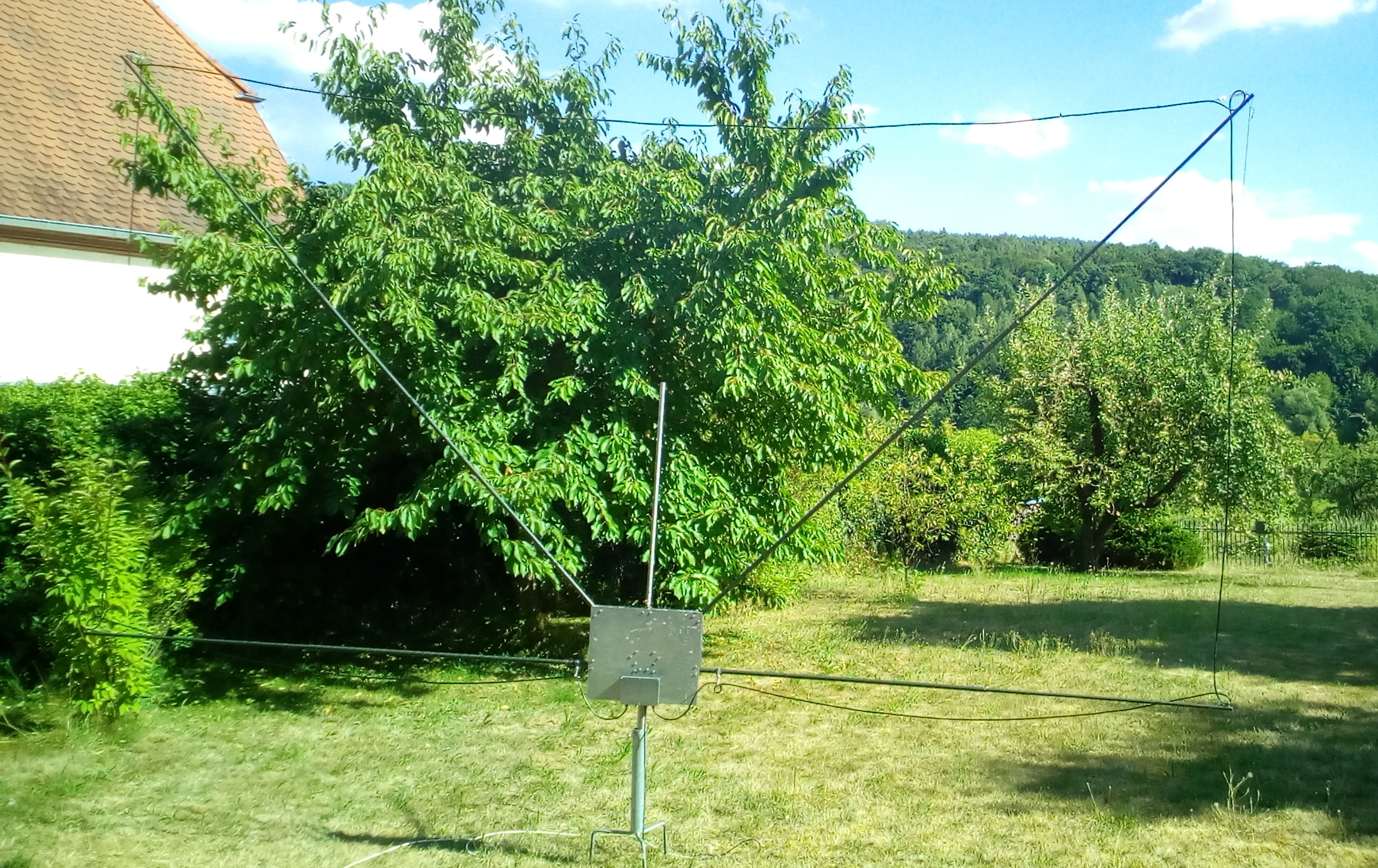
Choice between magnetic or electric magnetic
loops
What makes the difference? Can we find a
compromise?
Magnetic
loops
have a
circumference of less than 0.1 Lambda, that’ convention. They have an
8-shaped
horizontal radiation pattern with two sideways notches and a large
vertical opening.
Their input impedance is in the single digit Ohm range. Commercial
loops have a
circumference of far less than 0.1 Lambda for the low frequency bands,
so they
are not sensitive enough for DX reception.
Electric
magnetic loops have
a circumference of more than 0.1 Lambda, up to close to Lambda. For
creating
their radiation pattern they need a resistor in the medium Ohms range.
They have
a single preference pattern, but they still have a large vertical
opening.
Their input impedance is defined by this resistor, so their input
impedance is
also in the medium range. Typical are Flag, Pennant, K9AY and the
Waller Flag. Because
of their increased circumference they are widely used by DXers.
On
ground
wave reception the radiation pattern of both systems have good notches,
so
local noise can be suppressed. On low angle DX reception both systems
have the
directivity simulated. But on sky wave reception the front-/back ratio
decreases because of the large vertical opening of both antennas.
Nowadays local distortions are the challenge. That makes Prof. U. Rhode N1UL, DJ2LR, say: “voltage is the major cause of interference, current transmits and voltage is a nuisance”. So in the nearfield local noise is a voltage problem. There pure magnetic loops are helpful because of their low input impedance. This causes high currents but low voltage at the feedpoint. For DX-reception magnetic loops must be more sensitive. That made me think about a new design with a larger circumference but widely immune again noise voltage. This is why this antenna also needs a new current only amplifier. Details can be found on:
https://www.qsl.net/d/dk6ed//single%20loop/
When the local noise is low, my DK6ED electric magnetic double loop still is the best choice. The opening in its pattern is small and the front-/ back ratio is high. Compared to the Waller Flag this system is easier to build and even more sensitive. Details can be found on: